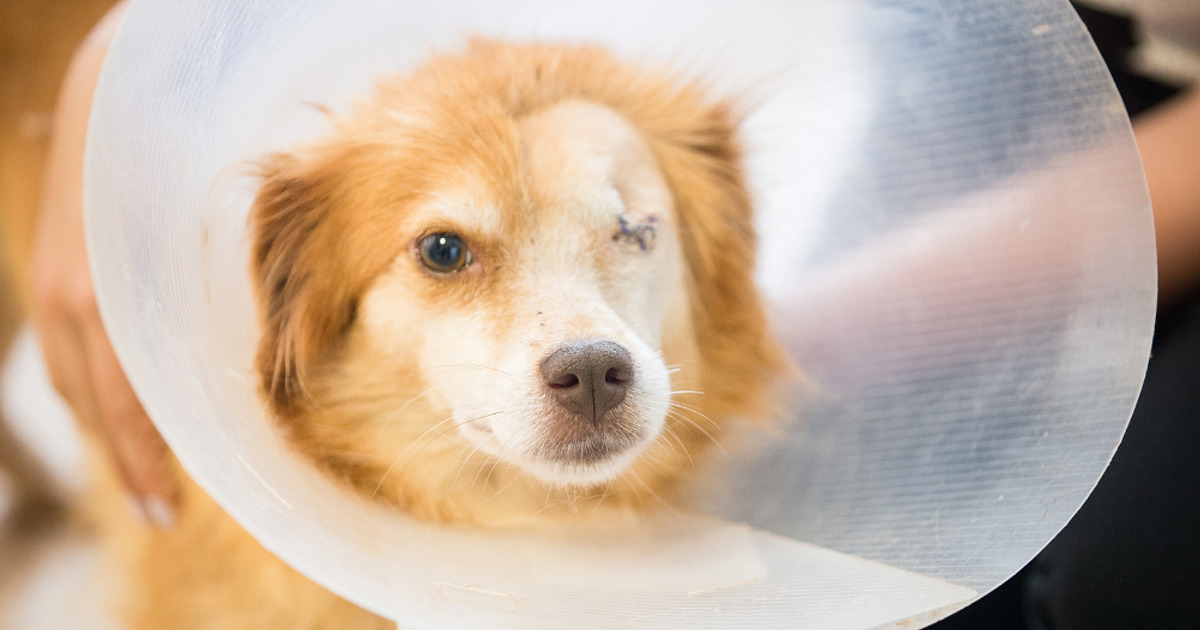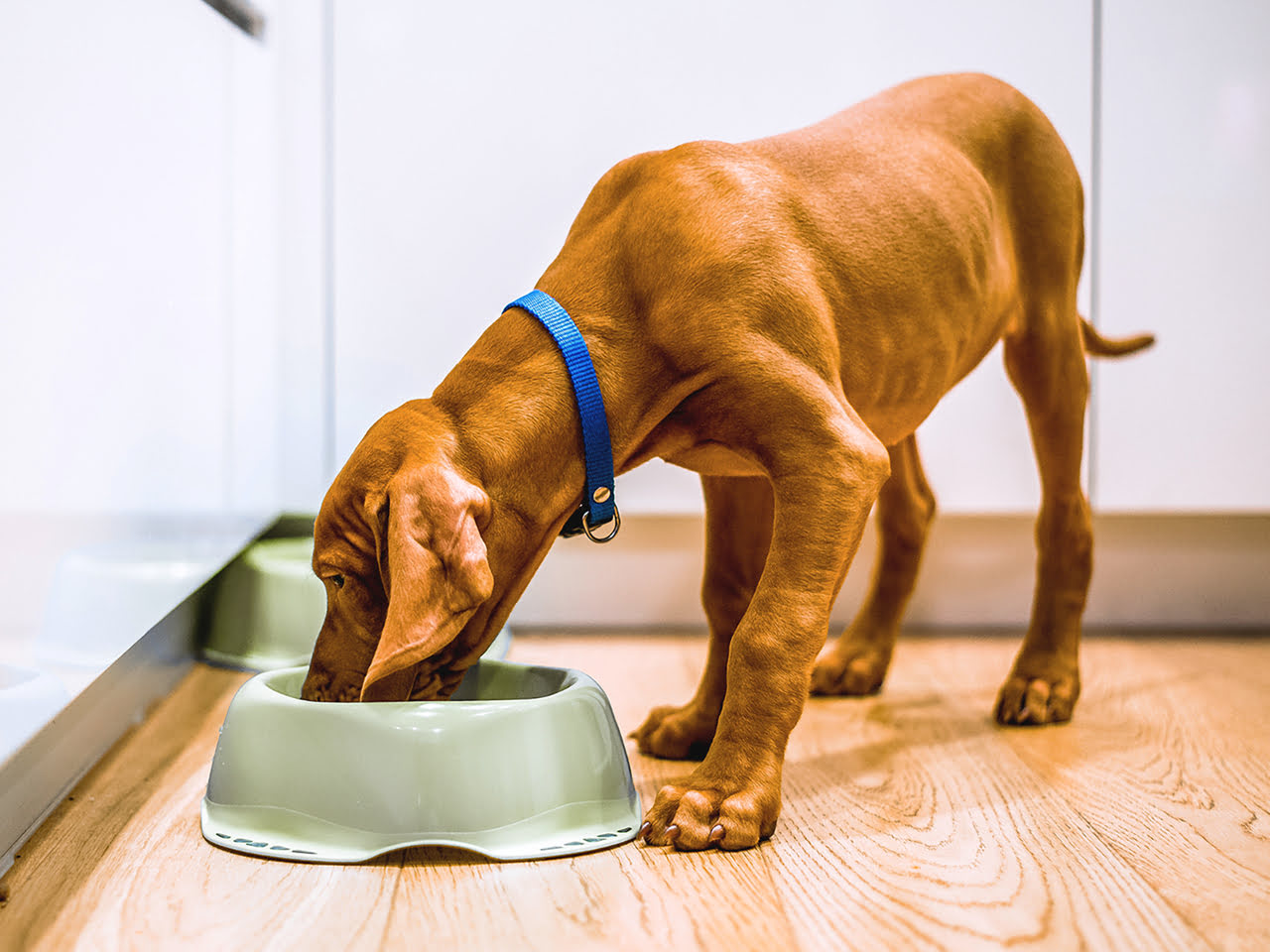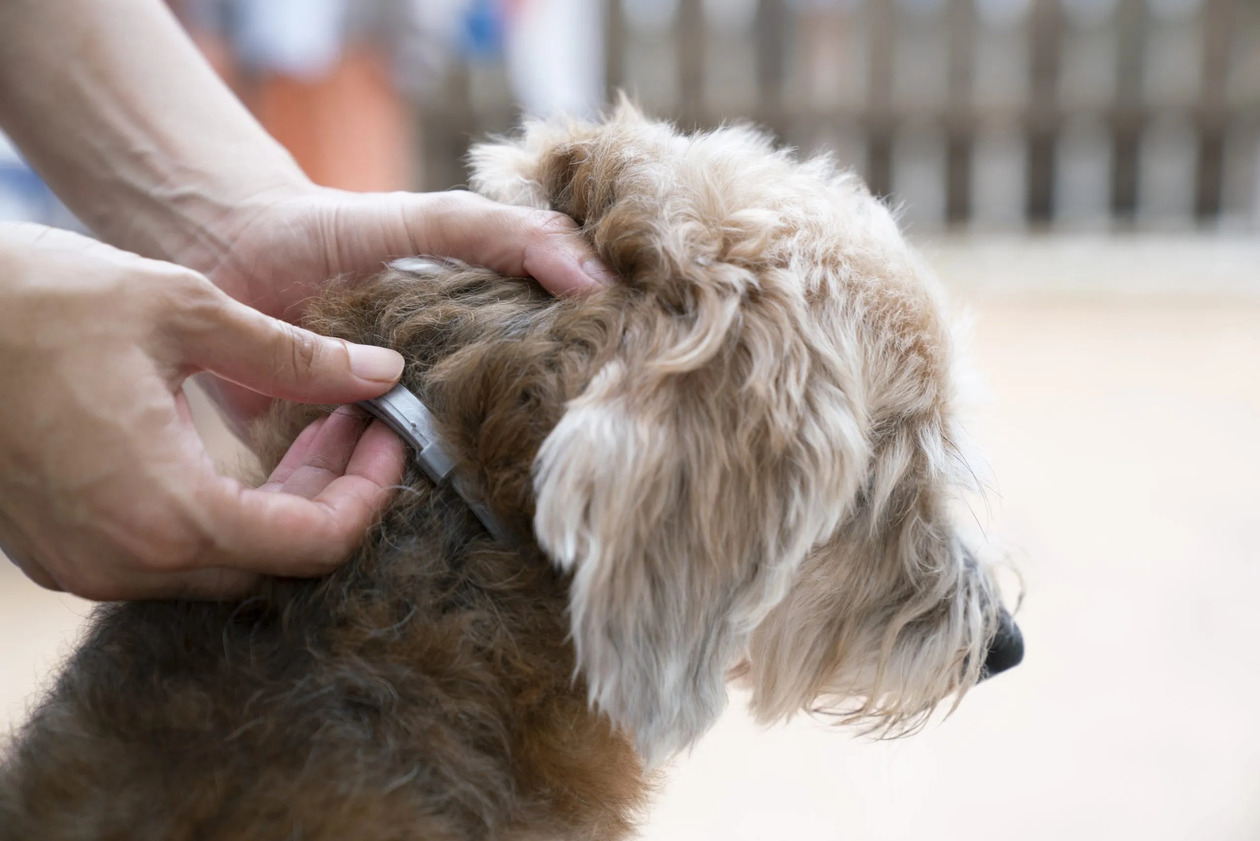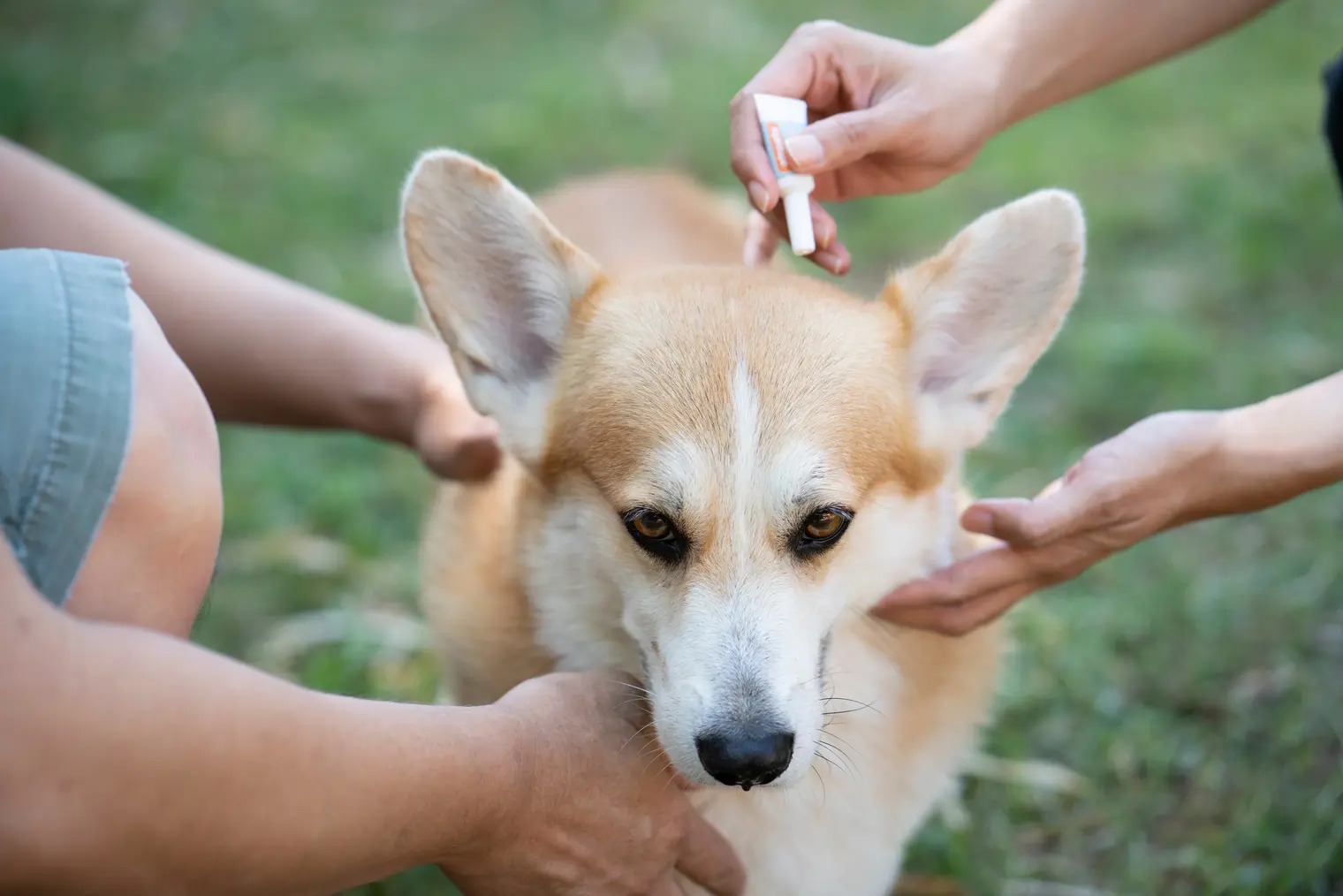Home>Health & Wellness>Common Health Issues>How Long Does It Take For Frontline To Kill Fleas On A Dog


Common Health Issues
How Long Does It Take For Frontline To Kill Fleas On A Dog
Modified: February 21, 2024
Learn about common health issues for dogs and discover how long it takes for Frontline to effectively kill fleas on your pet. Protect your furry friend with the right information.
(Many of the links in this article redirect to a specific reviewed product. Your purchase of these products through affiliate links helps to generate commission for Pawsomeoldies.com, at no extra cost. Learn more)
Table of Contents
Introduction
Frontline is a popular and widely used flea treatment for dogs. It is a topical medication that is applied to the skin, where it effectively targets and eliminates fleas, ticks, and chewing lice. Pet owners often turn to Frontline to provide relief for their furry companions and to protect them from the discomfort and health risks associated with flea infestations.
Understanding how Frontline works and the factors that influence its effectiveness is crucial for pet owners who want to ensure the well-being of their dogs. In this article, we will delve into the details of Frontline's mechanism of action, the variables that can impact the time it takes for Frontline to eliminate fleas, and practical tips for maximizing its efficacy. By gaining a comprehensive understanding of Frontline and its application, pet owners can make informed decisions to safeguard their dogs from the perils of flea infestations.
Let's embark on a journey to explore the intricacies of Frontline and unravel the mysteries surrounding its ability to combat fleas on dogs.
Understanding Frontline and its effectiveness
Frontline is a topically applied medication designed to combat fleas, ticks, and chewing lice on dogs. Its active ingredient, fipronil, is a powerful insecticide that targets the nervous system of parasites, effectively disrupting their normal physiological functions and leading to their demise. Additionally, Frontline contains (S)-methoprene, an insect growth regulator that inhibits the development of flea eggs and larvae, thus preventing the continuation of the flea life cycle.
Upon application, Frontline spreads across the skin and hair follicles of the dog, forming a reservoir of active ingredients that are gradually released to provide long-lasting protection. When fleas come into contact with the treated skin, the fipronil and (S)-methoprene work synergistically to eradicate existing infestations and prevent reinfestation.
The effectiveness of Frontline in killing fleas on dogs is attributed to its ability to target multiple stages of the flea life cycle. While fipronil swiftly eliminates adult fleas, (S)-methoprene disrupts the growth and development of eggs and larvae, effectively curbing the proliferation of new generations of fleas. This comprehensive approach not only eradicates existing infestations but also prevents the emergence of new ones, providing a holistic solution to flea control.
It is important to note that Frontline's effectiveness can vary based on factors such as the dog's size, coat thickness, and overall health. Additionally, environmental conditions and the presence of other pets in the household can influence the susceptibility of dogs to flea infestations. Understanding these variables is essential for pet owners to gauge the expected timeline for Frontline to eliminate fleas and to optimize its efficacy.
In the subsequent sections, we will delve deeper into the factors that can impact the time it takes for Frontline to kill fleas on a dog and provide practical tips for maximizing its effectiveness. By gaining a comprehensive understanding of these aspects, pet owners can make informed decisions to ensure the well-being of their beloved canine companions.
Factors affecting the time it takes for Frontline to kill fleas on a dog
Several factors can influence the duration it takes for Frontline to effectively eliminate fleas on a dog. Understanding these variables is crucial for pet owners to manage their expectations and optimize the efficacy of the treatment.
-
Dog's Size and Weight: The size and weight of the dog can impact the distribution and absorption of Frontline on the skin. Larger dogs may require a higher dosage to ensure adequate coverage, while smaller dogs may need a proportionally smaller amount. Ensuring the correct dosage based on the dog's size is essential for optimal effectiveness.
-
Coat Thickness and Length: Dogs with thicker or longer coats may present challenges in ensuring that Frontline reaches the skin and is evenly distributed. It may take longer for the medication to penetrate the fur and reach the targeted areas where fleas reside. Thoroughly parting the hair and applying Frontline directly to the skin can help overcome this obstacle.
-
Overall Health of the Dog: The general health and condition of the dog can influence the absorption and metabolism of Frontline. Dogs with skin conditions or compromised immune systems may exhibit variations in the rate at which the medication takes effect. It is advisable to consult a veterinarian if the dog has underlying health issues that could impact the treatment's efficacy.
-
Environmental Factors: The environment in which the dog resides can also play a role in the time it takes for Frontline to eliminate fleas. High humidity and warm temperatures can create favorable conditions for flea infestations, potentially prolonging the eradication process. Additionally, exposure to other infested animals or areas can lead to reinfestation, affecting the overall timeline for flea control.
-
Consistency of Application: Ensuring consistent and timely application of Frontline is essential for maintaining its effectiveness. Missing doses or applying the medication irregularly can compromise its ability to combat fleas within the expected timeframe. Adhering to the recommended application schedule is vital for achieving optimal results.
By considering these factors and taking proactive measures to address potential challenges, pet owners can enhance the effectiveness of Frontline in eliminating fleas on their dogs. Understanding the nuances of these variables empowers pet owners to make informed decisions and provide the best possible care for their canine companions.
How long does it typically take for Frontline to kill fleas on a dog?
The timeline for Frontline to effectively eliminate fleas on a dog can vary based on several factors, including the severity of the infestation, the dog's individual characteristics, and environmental conditions. In general, Frontline begins to kill fleas shortly after application, with visible results typically observed within 12 to 24 hours. However, it is important to note that the complete eradication of fleas may take up to 48 hours after initial application.
Upon the application of Frontline, the active ingredients, fipronil, and (S)-methoprene, work swiftly to target and eliminate adult fleas on the dog's skin. Fipronil disrupts the nervous system of fleas upon contact, leading to paralysis and eventual death. Simultaneously, (S)-methoprene inhibits the development of flea eggs and larvae, preventing the continuation of the flea life cycle. This dual-action approach ensures the comprehensive eradication of existing fleas and impedes the emergence of new generations.
The speed at which Frontline kills fleas is influenced by the dog's size, coat thickness, and overall health. Larger dogs may require a slightly longer duration for the medication to spread across their skin and achieve maximum efficacy, while dogs with thicker coats may experience delays in the penetration of the medication to the targeted areas. Additionally, the general health of the dog can impact the absorption and metabolism of Frontline, potentially affecting the speed at which it eliminates fleas.
Environmental factors also play a role in the timeline for flea eradication. Dogs residing in environments with high flea populations or exposure to infested areas may experience prolonged eradication periods. Furthermore, consistent application of Frontline according to the recommended schedule is crucial for achieving timely and effective flea control. Missing doses or irregular application can compromise the treatment's ability to eliminate fleas within the expected timeframe.
In summary, while Frontline typically begins to kill fleas shortly after application, with visible results within 12 to 24 hours, complete eradication may take up to 48 hours. Understanding the variables that influence the timeline for flea control empowers pet owners to manage their expectations and optimize the effectiveness of Frontline in safeguarding their dogs from flea infestations.
Tips for maximizing the effectiveness of Frontline
-
Thorough Application: Ensure that Frontline is applied directly to the skin and not just on the surface of the fur. Part the hair to expose the skin and apply the medication evenly, especially in areas where fleas are commonly found, such as the base of the tail and the back of the neck.
-
Regular Grooming: Regular grooming practices, such as brushing and bathing, can help maintain the efficacy of Frontline. Brushing the dog's coat helps distribute the medication, while bathing with a gentle shampoo recommended by the veterinarian can help remove dirt and debris that may interfere with Frontline's absorption.
-
Environmental Control: To complement Frontline's effectiveness, it's essential to address potential flea habitats in the dog's environment. Regular vacuuming, washing pet bedding, and treating outdoor areas can help reduce the overall flea population and minimize the risk of reinfestation.
-
Consistent Application Schedule: Adhere to the recommended application schedule provided by the manufacturer or veterinarian. Consistent application ensures continuous protection and maximizes the effectiveness of Frontline in eliminating fleas and preventing reinfestation.
-
Consultation with a Veterinarian: If there are concerns about the effectiveness of Frontline or if the dog experiences persistent flea infestations, consulting a veterinarian is crucial. A veterinarian can provide personalized guidance and recommend additional measures to enhance flea control based on the dog's specific needs.
-
Monitoring for Adverse Reactions: Keep a close eye on the dog after applying Frontline for any signs of adverse reactions. While Frontline is generally well-tolerated, monitoring for symptoms such as skin irritation, excessive scratching, or unusual behavior can help ensure the dog's well-being.
-
Preventive Measures for Other Pets: If there are other pets in the household, consider implementing preventive measures for them as well. Treating all pets with appropriate flea control products can help prevent cross-infestation and maintain a flea-free environment.
By implementing these tips, pet owners can optimize the effectiveness of Frontline in combating fleas on their dogs. Proactive measures, combined with consistent application and environmental management, contribute to a comprehensive approach to flea control, ensuring the well-being and comfort of canine companions.
Conclusion
In conclusion, Frontline is a valuable ally in the battle against fleas, ticks, and chewing lice, providing pet owners with a reliable and effective solution to safeguard their dogs from the perils of flea infestations. Understanding the intricacies of Frontline's mechanism of action, the factors influencing its effectiveness, and the expected timeline for flea eradication empowers pet owners to make informed decisions and take proactive measures to ensure the well-being of their beloved canine companions.
By comprehending the dual-action approach of Frontline, which targets both adult fleas and the development of eggs and larvae, pet owners gain insight into the comprehensive nature of flea control provided by this medication. The ability of Frontline to disrupt the flea life cycle and prevent reinfestation contributes to its efficacy in providing long-lasting protection for dogs, alleviating the discomfort and health risks associated with flea infestations.
Factors such as the dog's size, coat thickness, overall health, environmental conditions, and the consistency of application play pivotal roles in influencing the timeline for Frontline to eliminate fleas. Pet owners are encouraged to consider these variables and implement practical tips, such as thorough application, regular grooming, environmental control, and consistent application scheduling, to maximize the effectiveness of Frontline.
Furthermore, consulting with a veterinarian and monitoring the dog for adverse reactions are essential aspects of responsible pet care when using Frontline. The guidance and personalized recommendations provided by veterinarians can enhance flea control strategies, ensuring that the treatment aligns with the specific needs of the dog.
Ultimately, the proactive implementation of these measures contributes to a holistic approach to flea control, promoting the well-being and comfort of dogs while maintaining a flea-free environment. Frontline stands as a testament to the advancements in veterinary medicine, offering pet owners a reliable and trusted solution to combat fleas and protect their canine companions.
In the journey to provide the best care for dogs, Frontline emerges as a steadfast ally, empowering pet owners to create a safe and comfortable environment for their furry friends. With a comprehensive understanding of Frontline and its application, pet owners can navigate the realm of flea control with confidence, ensuring that their dogs receive the protection they deserve against the perils of flea infestations.














